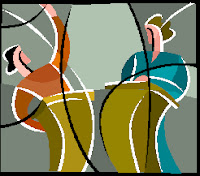I predict that 2012/2013 will be seen as the death of an old
paradigm in human resources and the beginning of the new paradigm: The New Employee Economy. As with most major shifts, this won’t happen overnight (and
many will think it didn't happen at all) but it will. While there are many
changes that will happen, here is my list of 6 Things that were (still) in
during 2012, but will be on their way out in 2013:
Things that are out
|
Things that will be in
|
Monster.com and all the other monstrous big job boards and sourcing behemoths
who can’t see the change coming
|
Hire Rabbit and all the other furry creatures who are leading the way
to a more clever way to map resources to jobs
|
Labor Acceptance of things being the way they are.
|
Labor Activism to lead the change for a more open market for resource
exchange. We don’t need jobs; we need places to ply our trades. If we can’t
find them, we’ll start our own company!
|
ATS Systems and all the complexity they have built in to manage a job
force that doesn't want to work that way.
|
Virtual Resourcing where employees can decide each morning where they
want to work.
|
Background Screening and all the fear based, overly conservative, “who
done it” mentality
|
Culture Fit and the idea that
screening people into the right job is more critical to success than
screening people out.
|
Social Media which is a lot of fun but has nothing to do with your
job performance. Leave Facebook posts alone. What the heck, we all like to
get a little crazy after work sometime.
|
Professional Media and the multiple environments that let you speak
for yourself. There will be even more growth of places where professionals
interact, share ideas and grow their value by growing their network.
|
Management Driven Product Design: Closed door meetings where managers
discuss customer needs, commission lengthy studies and decide what is best
for the customer.
|
Crowd Source Driven Product Design where people decide what they want
and let you know by the way they are using it.
|
This New Employee Economy is going to be characterized by a
less hierarchical mindset and a more open flow of resources. Sounds like fun.
See you in 2013.





















